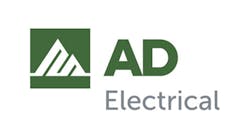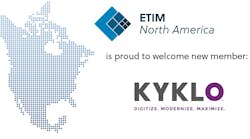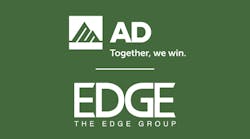Successfully implementing managed agreements means crunching numbers the right way.
Part three of this five-part pricing series takes distributors through the step-by-step process of pricing the managed inventory agreement
Over the last decade, large companies (primarily manufacturers) with sizable budgets for MRO and OEM supplies have looked to distributors to supply and manage their inventries. Where the large companies' internal purchasing departments used to secure and store these items, now much of the procurement, storage and inventory management function is outsourced.
Distributors have accepted the challenge of vendor managed inventory (VMI) and integrated supply (IS) arrangements with a variety of sales, logistics and sourcing services. But many of the current VMI or IS agreements I review are poorly measured and priced. Heavy investment is often made for each agreement because customers have different product file nomenclature, different software needs and differing managerial and control systems.
Many sellers and their managers don't include incremental costs and measure the discounted cash flows of these arrangements. In one instance, a national consortium has quoted at 15% to 16% cost-plus margins where the cost of operations has been 19% to 22% for many years. In other words, the consortium representatives are pricing below the cost floor of their membership; the inevitable result is that members' pretax profits are falling. To exacerbate the issue, the consortium has developed an e-commerce site and sends negotiated agreements through the site while charging their membership 2% to 3% transaction fees. The result is an agreement that once yielded 15% to 16% margin is now making a 12% to 14% margin, which is substantially below the cost of operations. Once the consortium membership wakes up from their financial slumber, I believe they will quickly change the momentum of their association.
Selling large-scale VMI and IS agreements without sound pricing analyses is like betting against the house. If you cannot receive a margin above the historic cost floor and cover incremental costs, you destroy value and rob service capacity for the financially viable customers who are part of your current portfolio. In the long run, distributors need to carefully consider more rigorous analyses, better understand costs, and possibly price separately for special services to large customers. Those that fail to understand the financial impact of low margin managed agreements should not be surprised when their razor-thin margins are reduced by poor pricing habits.
Modeling the Cost-Plus Managed Agreement Integral to the successful implementation of managed agreements is a proper procedure for pricing. Although most of these arrangements are cost-plus priced on product, they are increasingly being scrutinized for their effect on operating expenses. Sizable IS or VMI customers have sizable problems in procurement procedures. Vendor consolidation, a common parts nomenclature, differing inventory locations, management of duplicate inventories, technical support, onsite workers and various payment policies are part of the services wholesalers are required to provide. Understanding the impact of these services and how to price them is an important part of profitably structuring these arrangements.
For illustration, let's look at the mock supply house, Amperage Supply. Charles Brown of Amperage has been asked to help price a VMI for the Slide Circuit Corp. The agreement is for $3 million of primarily MRO and some OEM electrical products. Charles has been asked to help price the arrangement because Amperage management believes the service cost of managed agreements has not been incorporated into the pricing analysis.
Currently, Slide Circuit splits their electrical product inventory among several vendors and Amperage sells them approximately $250,000 at a 21% gross margin. Estimates from Slide Circuit are that the first year will start at $750,000 in revenues, reach $2 million by year two and $3 million by years three through year five. Slide Circuit's purchasing department is inviting all qualified electrical suppliers in the area to bid on the agreement, which will be a five-year contract.
Charles Brown has reviewed the previous pricing of large dollar managed agreements and has found the following problems:
- Prior pricing arrangements are cost-plus on product cost and do not consider activity costs arising from customer service demands.
- Pricing arrangements are made without consideration of expensive preparatory work in finding customer product history, aligning vendors and estimating product volumes.
- Pricing is done ad hoc without a consistent financial model that considers an adequate return for investors.
- Pricing is controlled by sellers rewarded on gross-margin dollars, and this is in conflict with net profit rewards for corporate officers.
Estimation of Preparatory and Service Costs For Amperage, Charles Brown has reviewed the expectations of Slide Circuit, and the following costs are associated with pursuing and maintaining the agreement.
- Slide Circuit's quotation will involve 70 hours of time at an average hourly rate of $50 per hour for managerial labor. The agreement will take four managers to complete. The total cost for matching product files, soliciting vendors and estimating processes is (4 x $50 x 70) or $14,000.
- If successful, Amperage will have to purchase and program new software to allow Slide Circuit to order online. The software and programming's initial costs are $20,000 and will cost $10,000 in subsequent years to maintain and update.
- Slide Circuit will require an inventory count at five plants and five locations per plant once per month. Each count and resupply takes an hour at a cost of $30 per hour. The total average count per year is (5 plants x 12 months x 5 locations) or 300 visits x $30 per visit or $9,000 in added service costs.
- Slide Circuit asks that a special sales representative be assigned full time to their account. The representative is charged with managing, on a daily basis, the agreement and the unpredicted needs of Slide Circuit. Charles Brown estimates that the average seller, including expenses, averages $110,000 per year. Typically, Amperage would expect to assign a Slide Circuit account to an experienced seller, and it would consume 40% of his time. The incremental amount of time Slide Circuit is requesting is 40% of $110,000 or $44,000.
The incremental costs to maintain the Slide Circuit agreement are estimates. If Amperage is successful in landing the agreement, Charles Brown will need to monitor the service costs on a regular basis for adjustment.
Modeling the Financial Validity of the Vendor Managed Agreement Charles Brown has searched for a consistent and accurate method with which to measure the return of a managed agreement. His feeling is that large managed agreements are akin to large capital investments in that they require a suitable return for shareholders and a consistent, rigorous method of evaluation. To develop a model for evaluating managed agreements, Charles uses the concept of Discounted Cash Flow Analysis with a weighted average cost of capital.
Charles uses several commonly used financial principals to determine the weighted average cost of capital (WACC). The financial formula for WACC is:
R superscript * = Rd(1-T)(D/D+E) + Re(E/D + E) where R superscript * is WACC, Rd is the current borrowing rate, T=Tax Rate, D=Firm Debt, E=Firm Equity and Re is the expected return.
To satisfy the formula requirements, Charles calculates the current borrowing rate at 9.5% per year and the tax rate at 38%. For the most recent year, Amperage Electric had $18 million in owner's equity and $14 million in debt. Total debt and equity is $32 million with 56% equity and 44% debt.
Calculating the expected return (Re) is done using a financial formula called the Capital Asset Pricing Model or CAPM. The model states that the expected return (Re) is a sum of the risk free interest rate (Rf ) plus the product of the industry's beta (B) times the overall market return (Rm) minus the risk free rate. It is written as:
Re = Rf + B (Rm - Rf)
The risk free rate is the rate of treasury securities, which is a 6.5% annual return. The beta, a measure of stock volatility, is taken from public records of similar distributors and averages .6. The market return (Rm) has averaged 12% over the last five years. Plugging the numbers into the CAPM we have:
.065 + .6 (.12 - .065) = .098 or 10% as an expected return for Amperage Supply.
Charles Brown is now ready to determine the WACC. Following the formula for WACC, Charles has the following:
0.095 x (1-.38)(14/32) + .10(18/32)
The formula totals a return of 8.2%, which is what Amperage should expect to earn on managed agreements.
Managed Agreement Pro Forma and Discounted Cash Flows Charles Brown, in Figure 1, has developed a pro-forma income statement for the agreement. The time frame for the model is Y0 (current year) through year five. In year zero, sales are the original $250,000 at a 21% gross margin. From years one through five, the gross margin is 18%. Operating expenses are 17% of sales and represent the standard expense to sales ratio of Amperage Electric. Beyond the operating expenses are those incremental expenses specific to the agreement. They include $14,000 in year zero for quotation, $20,000 in year one for programming, $10,000 in subsequent for programming maintenance, $9,000 per year for inventory management, and $44,000 per year for a sales manager.
Standard operating expenses and incremental expenses are totaled and deducted from the account gross margin to yield the net profit before tax. The tax rate is 38% and is deducted from the pre-tax line to give the net profit after tax. The after tax cash flows are discounted with an 8.2% weighted average cost of capital to yield a negative investment of $160,487.
Charles now knows that an 18% margin on product cost in years one through five will yield a negative investment. He then uses a 20.5% margin in the second analysis. The result is a positive discounted cash flow of $12,583. He then proceeds to tell Amperage management that they should quote 20.5% on the cost of goods to make the Slide Circuit bid a positive investment for the company.
Discounted Cash Flow and Incremental (Relevant) Expenses The Discounted Cash Flow (DCF) model takes is -C0 + CF1/WACC (First Power). . . . CF5/WACC (Fifth Power). In essence, DCF modeling uses the WACC as a power specific to its year divided into the net profit after tax (CF) in the same year. For example, the cash flow in the second pro-forma (20.5%) in year two would be $4,340 after tax divided by .082 to the second power. After each year's after-tax cash flow is determined and divided by the appropriate interest calculation, they are summed to give the Net Present Value (NPV) of the project. Generally a NPV above zero is considered an investment worth taking. In the case of two or more competing projects, the highest NPV should win the investment dollars of the firm.
The power of NPV analysis of managed agreements is that once the pro-forma models are developed, numerous analyses at different cost- plus margins can be easily programmed and analyzed for their yield to the distributor. Modern spreadsheet programs including Excel and Lotus have NPV calculations, which are easily programmed.
It is also worthy to note that expenses above and beyond normal operating expenses and relevant to the agreement are used. The reader should understand that expenses relevant to each agreement, and incremental to it, need to be included in the DCF model. Because most distributor expenses are step-variable leaning towards variable, I recommend that the financial analyst uses the standard operating expense plus any incremental expenses.
Unless a strong case can be made that standard operating expenses don't apply, they should be included in the analysis. For instance, in the assignment of the sales manager for Slide Circuit, only the incremental expense of $44,000 was used.
Some managers would argue that since a new sales manager is not hired, there is not an incremental expense. I disagree, however, because the sales manager is assigned to one specific account and his previous territory will be managed by others within the firm. Eventually, a replacement seller will be hired as business for Amperage Electric increases. Even if a replacement sales manager is not hired, other managers will be stretched to cover accounts left by the Slide Circuit assignment. Inevitably, these managers will become more quickly capacity constrained and there will be an opportunity cost since they can pursue less new business with increased assignments.








